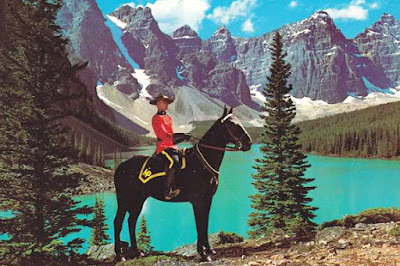The archetype of the avenging swashbuckler is a very old one. Ballads of Robin Hood go back to the 15th century, and there were certainly others before him... Characters of great daring and great romance who rob from the rich and give to the poor, and otherwise seek to right wrongs and fight injustice against which others are cowardly or impotent. The legacy of the swashbuckler has distilled into the modern superhero, the Captain Americas and Batmans who fight the fight that properly constituted authority cannot. Though the swashbuckler archetype is an old one, some of its most popular and well-known manifestations are not as old as some might think. The lineage of Batman - the dilettante whose secret identity is the mask - goes back at least to Baroness Orczy's Scarlet Pimpernel, the 1905 novel set in Revolutionary France. His more direct ancestor is Johnston McCulley's black-clad avenger of Alta California, Señor Zorro, who was created in 1919.
.

Wednesday, 22 February 2017
Wednesday, 8 February 2017
Walter R. Booth's "Airship" Trilogy
By 1909, Scientific Romances were well established in film. The "Romance" part often overshadowed the "Scientific" part, however. Georges Méliès, one of the most innovative minds in movies in the first decade of the 20th century, was most interested fantasies with a Vernian gloss rather than a straight attempt at serious speculative storytelling. In many cases, science was merely a just-so explanation for phenomena that would otherwise be attributed to magic or ghosts. For example, The Electric Hotel (1905) by Segundo de Chomón is an otherwise typical haunted house trick film, only this time it's electric conveniences gone awry.
Walter R. Booth was a magician turned trick filmmaker, like Georges Méliès in many respects. with the same preoccupations. 1901's The Magic Sword, for instance, is a straightforward fantasy story. An Over-Incubated Baby from the same year is more of a trick film with a mad science premise. But come 1909, Booth was interested in a much different project. Rather than a humourous trick film, The Airship Destroyer is a remarkably serious and prescient attempt at Scientific Romances in the vein of H.G. Wells' War in the Air, published the preceding year.
This film is a remarkably prophetic one-reel opening chapter to a trio of conceptually similar films that includes The Aerial Submarine and The Aerial Anarchists. In it, a thinly-veiled Germany descends on the British coast with a fleet of invincible dirigibles which can only be brought down by the genius of an inventor and his guided aerial torpedo. More authentically like Verne and Wells, Booth's prognostications were based on solid projections of existing technology, as both Zeppelin's and the Wright Brothers' crafts had debuted and entered into commuter and military service by 1909. A scant few years thereafter, Europe would descend into violent mechanized warfare and The Airship Destroyer would become horrifying reality. It was even re-released in 1915 to boost morale.
Extract from The Airship Destroyer.
A year later, Booth released The Aerial Submarine, in which a pair of children are kidnapped by high-tech pirates inspired loosely by Jules Verne's Robur. From beneath the waves they strike out at passing cruise ships, looting their cargoes. When the submarines of the Royal Navy catch their scent, the pirates take to the air and drop shells on their hapless pursuers. It is only when a careless engineer causes disaster that the world has a hope of salvation from the aero-pirates. It is much less serious than The Airship Destroyer, returning to the cinematic genre's more fanciful trends.
Unfortunately, the third film in the series, The Aerial Anarchists (1911), is a lost film. No footage is known to exist, and all that is known is a vague synopsis that mentions a bombing of St. Paul's Cathedral and the destruction of a railway over a chasm.
Both The Airship Destroyer and The Aerial Submarine can be viewed from British ISPs on the BFI Player website.
Extract from The Aerial Submarine.
Unfortunately, the third film in the series, The Aerial Anarchists (1911), is a lost film. No footage is known to exist, and all that is known is a vague synopsis that mentions a bombing of St. Paul's Cathedral and the destruction of a railway over a chasm.
Both The Airship Destroyer and The Aerial Submarine can be viewed from British ISPs on the BFI Player website.
Saturday, 4 February 2017
Rose Marie, Renfrew, and the Canadian Mountie on Film
Today's special feature is part of the O Canada! Blogathon hosted by Speakeasy and Silver Screenings. Click on the banner above to read more about the legacy of motion pictures in the True North Strong and Free!
Hollywood's "golden age" of the Twenties, Thirties, and Forties never wanted for stories of adventure set in the rugged wilderness of the mighty Northwoods. Between An Acadian Elopement in 1907 and the 1975 publication of Canadian historian Pierre Burton's damning Hollywood's Canada: The Americanization of Our National Image, 575 films were produced featuring mountainous and snowy locales populated by trappers, loggers and the women of disrepute who loved them. More than half of these, over 250, focused on that most iconic figure of Canadian history, the Mountie.
 |
| CANADA! |
Subscribe to:
Posts (Atom)



